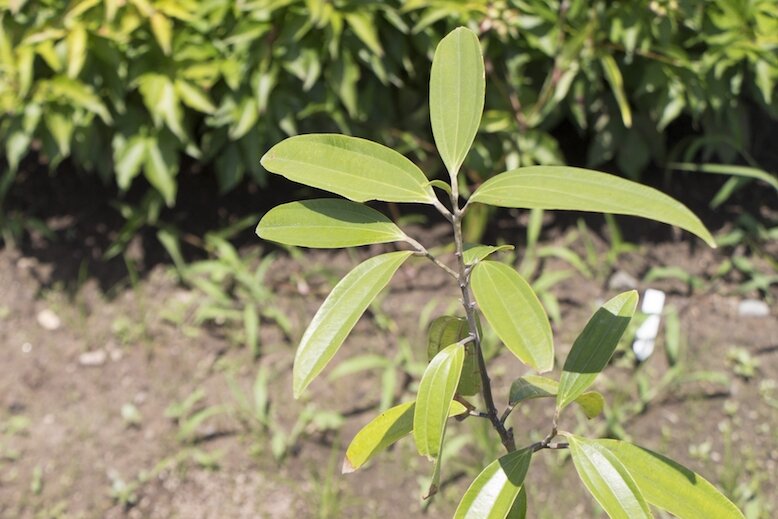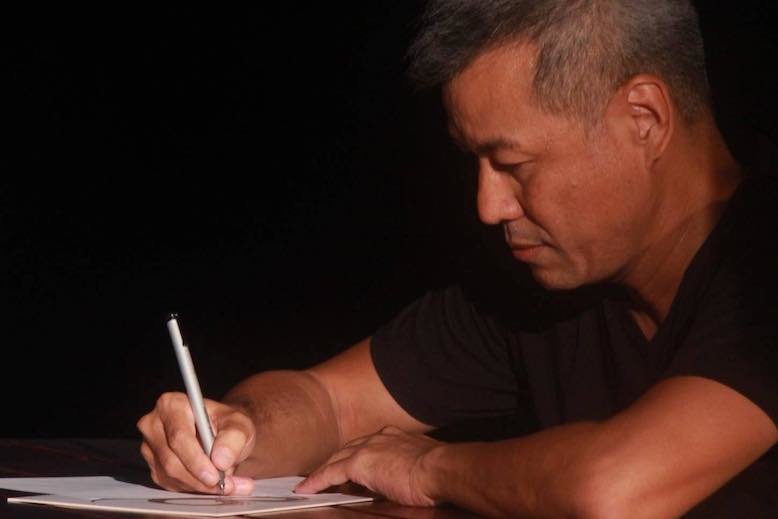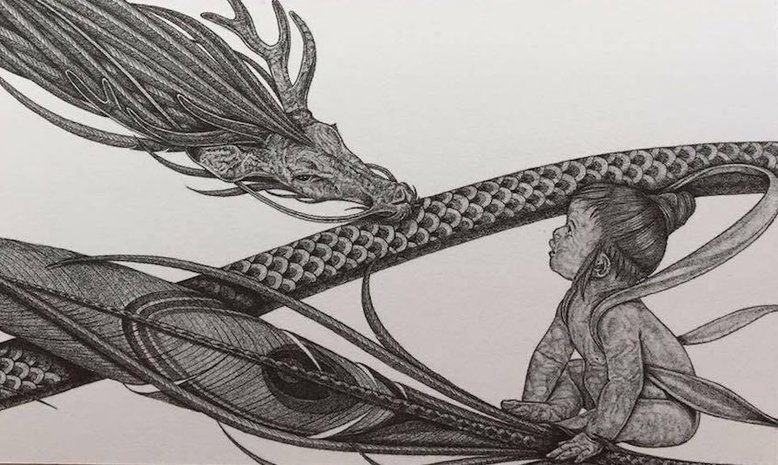In Yanbaru forest there are trees with so much history that their arterial roots are intertwined and twisted deep into earth and rock. There are all sorts of trees here; old trees, young trees, and beyond that, lush green hills that stretch towards the coast.

A young cinnamon tree.
Within the forest, there is a clearing and a man that is not altogether a gardener who plants trees. He returns here when the occasion demands, crouched beside a young cinnamon tree, now barely a sapling, the man postured in just the same way that a father would crouch to tie the shoes of a child. He plants them in light of every book of his artwork that is sold, books with figures that come out of his visions. His name is Kiyota Oshiro, and he calls himself a pointillist.

He draws his visions that come out of prayer — mythical interpretations of deities and animals; a griffin with long and wispy braids flowing from its body, an elephant with feathered ears, a figure seated crossed-legged on its crown.

For Okinawan culture, spirits abound and are ever restless, forever abiding within the realms of nature. There was once a goddess on Miyako Island who lived in a well. When the well was destroyed to make way for a road, there began to be a series of car accidents that were considered unnatural and attributed to the well's destruction. In such a case, shamans are tasked as detectives of the extraordinary to find resolutions.




